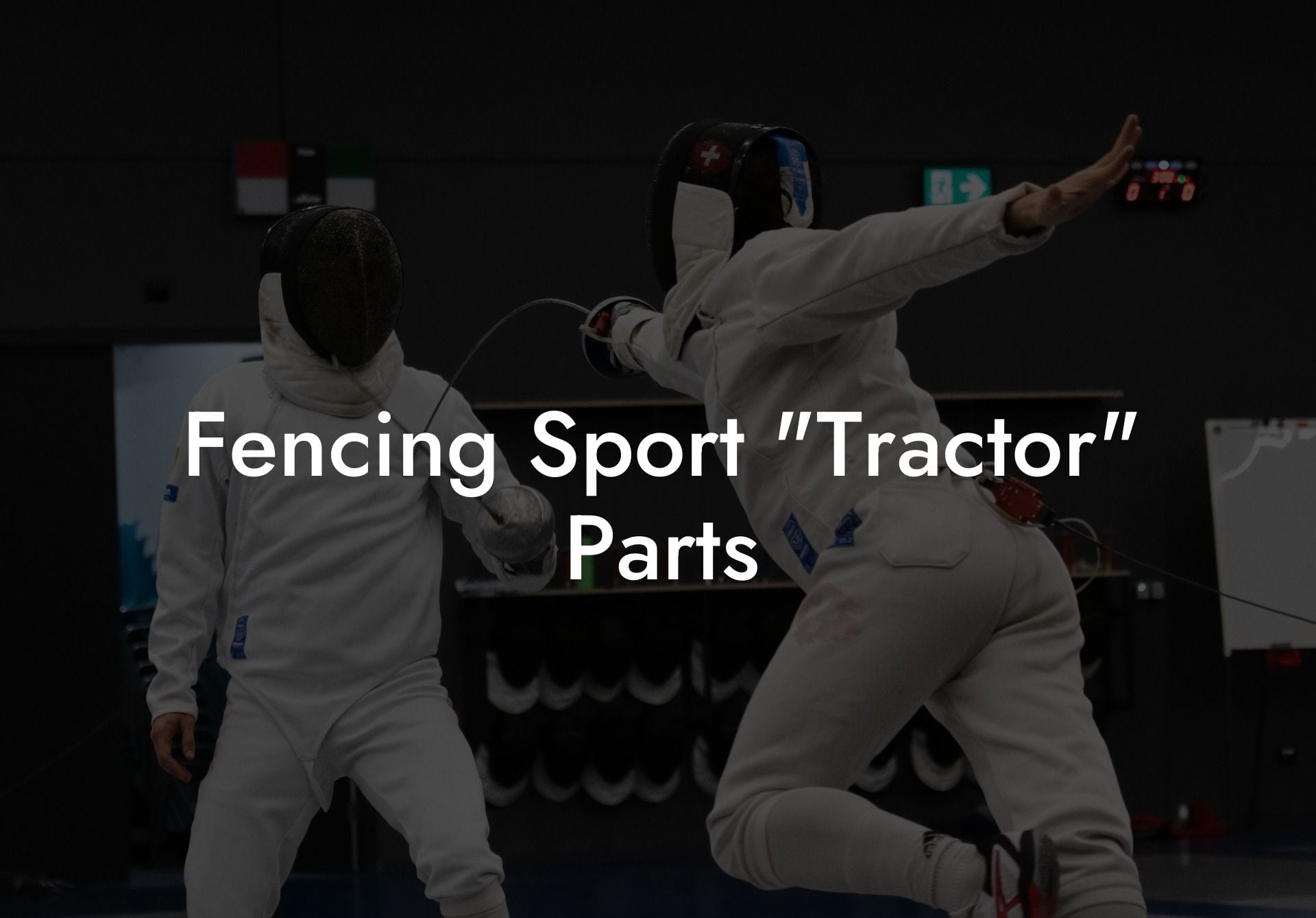Did you know that in the fencing world, the term "tractor" refers to essential parts of the sport – from basic equipment to proper techniques? These essentials are crucial for building a solid foundation in the sport and understanding its technicalities. In this comprehensive guide, we'll explore fencing's "tractor" components, allowing you to dive deeper into this thrilling sport.
Fencing Sport "Tractor" Parts Table of Contents
1. Fencing Weapons: Choosing the Right One for You
1. Fencing Weapons: Choosing the Right One for You
There are three types of fencing weapons: foil, epee, and sabre. Each weapon has its unique rules, target areas, and tactics. Choose the weapon that suits your interests and strengths to maximize your chances of success as a fencer.
Foil
- A light and flexible weapon used in the Olympics
- Target area: torso
- Tactics: speed and accuracy
Epee
- A heavier weapon also used in the Olympics
- Target area: the entire body
- Tactics: patience and strategy
Sabre
- A cutting and thrusting weapon used in the Olympics
- Target area: everything above the waist
- Tactics: aggressive footwork and fast attacks
2. Protective Gear: Safety First!
As with any sport, safety is a top priority in fencing. Investing in quality equipment helps you protect yourself from injuries and allows you to focus on your technique and strategy. Essential protective gear includes:
- A fencing mask that covers your entire head
- A jacket made of anti-puncture fabric
- Plastron, an underarm protector worn beneath the jacket
- Gloves, with one for the weapon hand extending further up the arm
- Breeches or knickers, which protect the legs
- Socks and fencing shoes, which offer excellent grip and movement
3. Fencing Techniques: Mastering the Basics
Fencing demands a balance of mental and physical prowess. As you start your fencing journey, it's essential to learn and master basic techniques, including:
Footwork
- Advance: a small forward step
- Retreat: a small backward step
- Lunge: a quick thrust forward to reach the opponent
- Ballestra: an aggressive, hopping advance towards the opponent
Bladework
- Parry: defensive action to block the opponent's attack
- Riposte: an offensive maneuver following a successful parry
- Disengage: maneuvering the blade around the opponent's parry
- Beat attack: forceful contact with the opponent's blade to provoke a reaction
Fencing Sport "Tractor" Parts Example:
Imagine yourself attending your first fencing class. You’ve chosen the foil as your weapon and have donned all the necessary protective gear. Now, it’s time to focus on mastering the basics. Your coach introduces the fundamental footwork and bladework techniques, guiding you through advance, retreat, parry, and riposte drills. As you become more comfortable and precise with your movements, you can begin to develop your unique fencing strategy, utilizing combinations of techniques and integrating your personal strengths.
Now that you have a better understanding of fencing's "tractor" components, you're well on your way to becoming a skilled fencer. Be sure to practice regularly and never underestimate the importance of proper equipment and mastering the basics. As you progress, don't forget to explore other resources and guides available on Anchorage Fencing Club. If you found this article helpful, please share it with fellow fencers and enthusiasts to help spread the love for this dynamic and exciting sport. Until next time, en garde!













